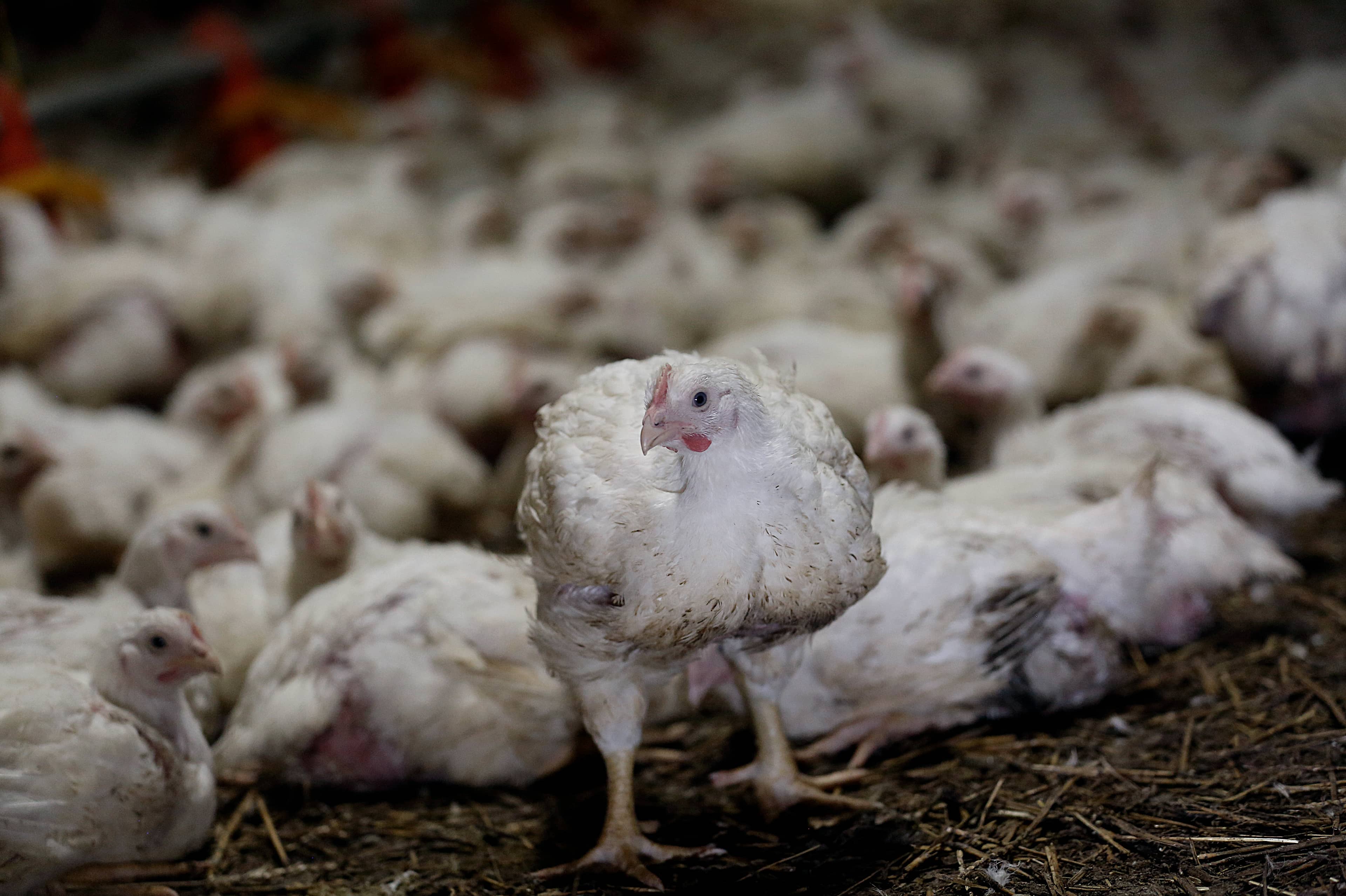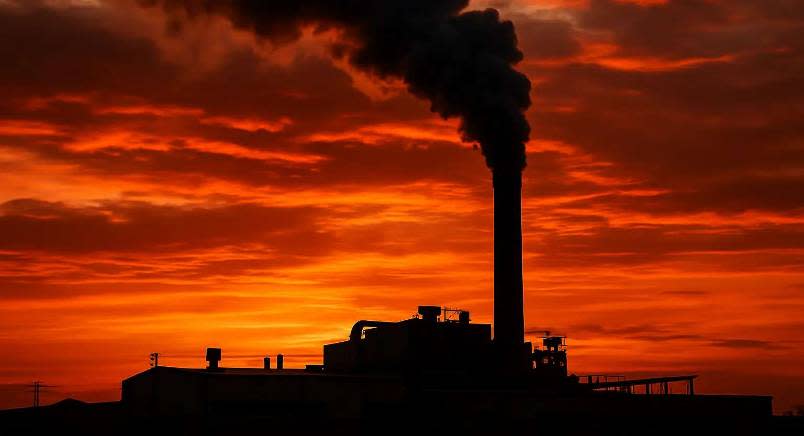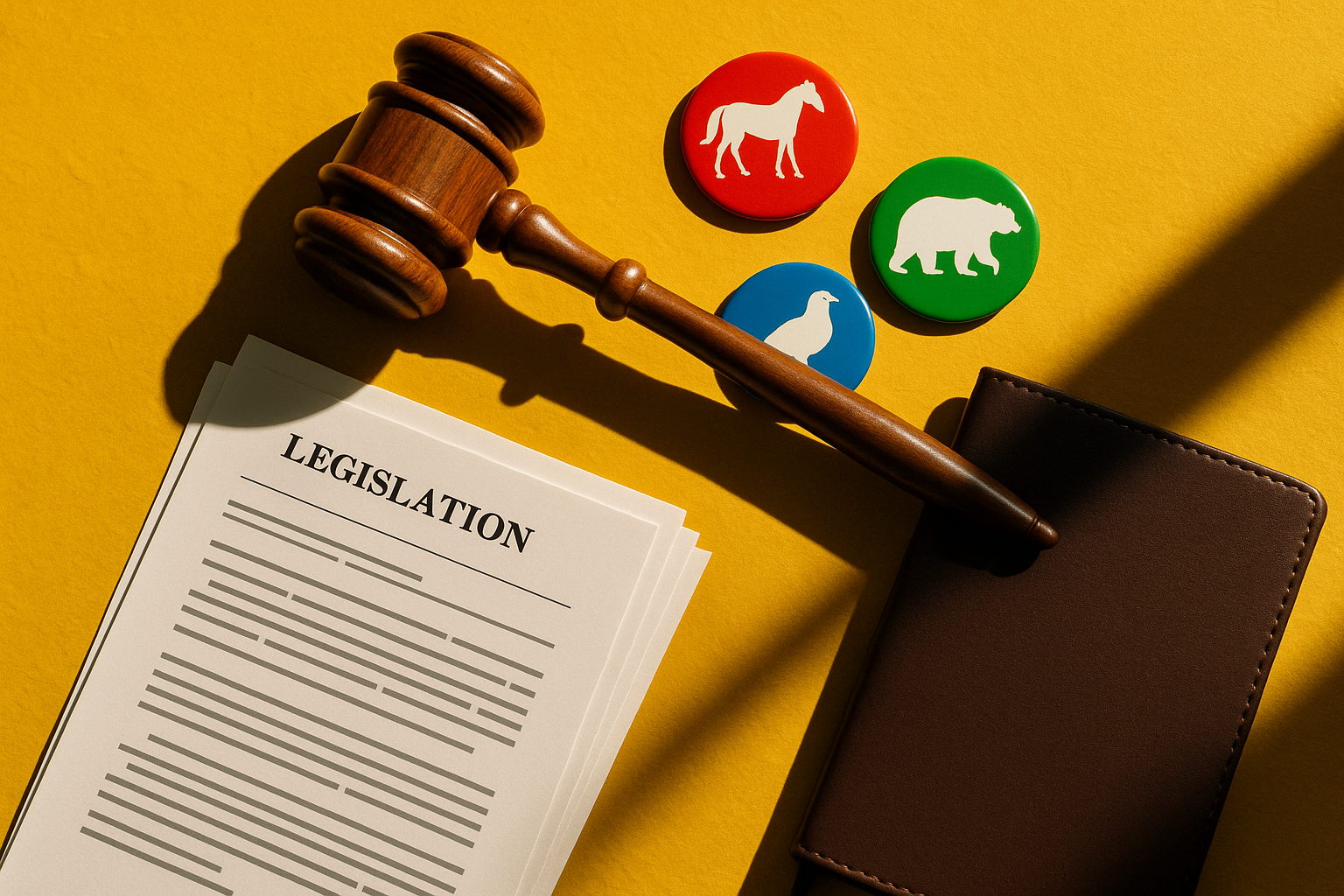




Ventilation shutdown plus (VSD+) is an incredibly inhumane method of killing lots of animals at once by shutting off air supply and driving up temperatures, leading to organ failure and suffocation. And it has to stop.

Heat rises quickly in a windowless, airless shed. With no running ventilation, there’s no relief from surging temperatures—especially as heat gets pumped in from the outside. For the chickens trapped inside, it becomes harder and harder to breathe. Eventually, after enduring hours of suffering, flocks of chickens suffocate and die in agony. This scenario is real, and the results are intentional. Ventilation shutdown plus is a brutal method of putting an entire flock—or herd—of animals to death all at once.
No animal should ever endure hours of suffering to die in extreme heat. But in 2022 alone, millions of chickens have died through this horrific practice. Why? In 2022, avian influenza—or bird flu—reemerged in bird populations across the US. According to the CDC, more than 58 million poultry have been affected by bird flu to date. To stop the highly infectious virus from spreading, poultry farmers began culling entire flocks of chickens and turkeys raised to produce eggs or meat—meaning, millions of birds were put to death. The primary method used to kill so many chickens at once is called ventilation shutdown plus.
What is ventilation shutdown plus?
Imagine a windowless shed with thousands of chickens inside. That’s the only home they’ve ever known, an overcrowded room full of feathered beings forced to stand in their own excrement. Suddenly, the air stops circulating. Ventilation is sealed off, making it hard for chickens to breathe. The temperature rises.
Ventilation shutdown plus (VSD+) is a process in which barns or sheds where chickens or other animals live are closed tightly, ventilation is sealed and fans are turned off, and heat, steam, or gas is turned on. As the temperature inside the building soars above 100 degrees Fahrenheit, the animals inside die from suffocation, heat stroke, and organ failure. Horrifically, this process can take many excruciating hours during which animals are essentially baked alive.
What’s the difference between VSD and VSD+?
Ventilation shutdown (VSD) is the process of cutting off ventilation so that temperatures inside a building naturally rise (getting hotter and hotter) or fall (getting colder and colder).
Ventilation shutdown plus (VSD+) is a specific method of depopulation that involves shutting off ventilation and pumping in heat or carbon dioxide. VSD+ has been used through the recent avian influenza outbreak to deliberately put millions of chickens and other birds to death en masse.
How does VSD+ kill animals?
Because ventilation shutdown plus means ventilation to a building is completely cut off, then added heat or gas is pumped in, animals die from heat stroke, organ failure, and suffocation. The process can take hours, and some have compared it to leaving a dog in a hot car with the heat on. Chickens, pigs, and other animals who die by VSD+ are essentially baked alive, a process that can take hours. It’s a horrific way to die.
Is VSD+ humane?
No. It would be criminal to deliberately allow a pet to die through forced heat and suffocation, and it’s not acceptable to allow farm animals to perish in this way, either. That’s why veterinarians are demanding the American Veterinary Medical Association (AVMA) reclassify VSD+ as “not recommended.”
Currently, there’s a problematic loophole in which the AVMA approves VSD+ for culling chickens and pigs in “constrained circumstances.” But this method of slaughter is anything but humane. Animals die from VSD+ in terror, and their death is not quick or painless. This begs the question: why is VSD+ happening in the first place? The answer has everything to do with the rampant spread of disease on factory farms.
How does disease spread on factory farms?
When many (many) animals are packed together in crowded housing conditions, disease can travel fast. This can also happen within crowds of people—as we’ve just experienced in the COVID-19 pandemic, for example, close proximity leads to higher likelihood of transmitting the disease.
A whopping 94% of animals raised for food (or to provide products like milk and eggs) live on factory farms, where crowding and unsanitary conditions are rampant. Because of this, factory farms can then become breeding grounds for infectious diseases to emerge, spread, and travel from animals to humans.
Germs that jump from animals to humans are known as zoonotic diseases. While COVID-19 brought the connection between infectious disease and animal cruelty into the spotlight, other illnesses remain of great concern. The sad truth is the threat of zoonotic disease doesn’t appear to be going away. A United Nations report suggests we may see an increase in zoonotic diseases due to unsustainable practices in farming, climate change, and wildlife exploitation.
The validity of this theory is reflected in this year’s avian influenza outbreak. Avian influenza, or bird flu, is a contagious respiratory disease that spreads through direct contact with infected birds. It can also spread through contact with contaminated water, feed, equipment, or materials. Chickens raised on factory farms make up nearly 90% of all land animals raised for food in the US, and they also suffer incredible abuse. Living in cramped, filthy sheds with thousands of other birds, one sick chicken can quickly lead to a very sick flock.
Bird flu travels fast in crowded factory farms—but it’s worth remembering that factory farms are crowded because our broken food system prioritizes scale and profit. The spread of bird flu, then, is also a symptom of industrialized animal agriculture. What happens when a few chickens in a large flock end up with avian influenza? For an industry focused on stopping the spread, the response is to put chickens to death through depopulation.
What is animal depopulation?
Animal depopulation is a term for killing large numbers of animals all at once—namely pigs, cows, or chickens. Depopulation generally happens in response to a crisis and should only ever happen on rare occasions when a humane method of slaughter, like euthaniasia, is not possible.
Unfortunately, the American Veterinary Medical Association (AVMA) currently approves depopulation methods like VSD+ in “constrained circumstances.” This has been interpreted as a go-ahead in response to events like a surplus of pigs during the COVID-19 pandemic or the avian influenza outbreak that erupted in 2022. In both cases, farmers turned to VSD+ to kill vast numbers of pigs (during COVID-19) and chickens (during avian influenza), allowing countless herds and flocks to die slowly and painfully in unbearable heat.
What animals are most often culled by VSD+?
To date, poultry (primarily chickens and sometimes turkeys) and pigs are most commonly culled through ventilation shutdown plus. That’s because VSD+ has been most commonly used in response to crises that have affected pigs and chickens, but now the practice is—alarmingly—on the rise.
Why are chickens killed by VSD+?
A research group at North Carolina State University received a grant from the US Poultry and Egg association to validate VSD+ as a method for culling chickens. After that single industry-funded study was published, the American Veterinary Medical Association (AVMA) listed ventilation shutdown plus as “permitted in constrained circumstances,” which the poultry industry interprets as “veterinary approved.”
Since then, VSD+ has become increasingly prevalent and is now put into practice at unprecedented rates. During the bird flu outbreak that began in 2022, VSD+ became the method of killing for millions of chickens across the nation.
Why are pigs killed by VSD+?
When slaughterhouses closed during the COVID-19 pandemic, factory farming led to what the industry considered a surplus of pigs. To address this, farmers turned to VSD+, eradicating whole herds of pigs all at once by forcing them to swelter to death in unbearable heat.
Baking birds and pigs to death cannot become commonplace. It’s time to demand change, starting with asking the AVMA to do away with their endorsement of VSD+.
How can we stop VSD+?
In spite of the blatant cruelty of ventilation shutdown plus, the AVMA continues to endorse the practice—an endorsement based on one poultry industry funded study. It’s time for that to change.
Veterinarians are a trusted partner in the care of all animals, regardless of species, and veterinarians are joining together to call on the AVMA to disendorse VSD+ and help prevent more animals from being roasted alive. Together, we can join them in sending a powerful message that it’s time to stop the suffering and horrific slaughter of millions of animals.






